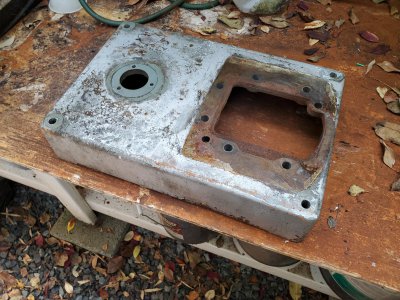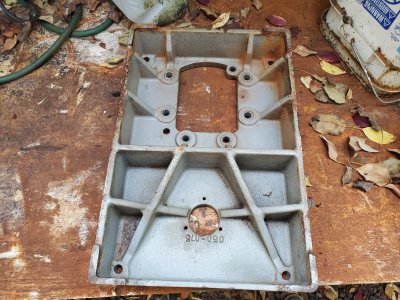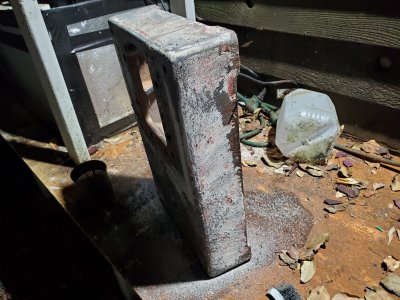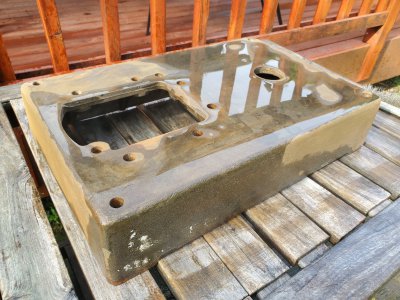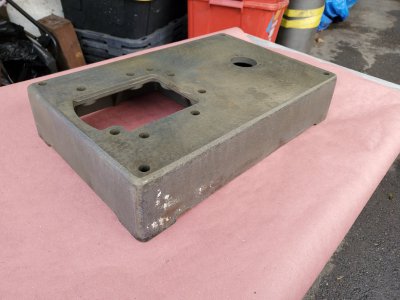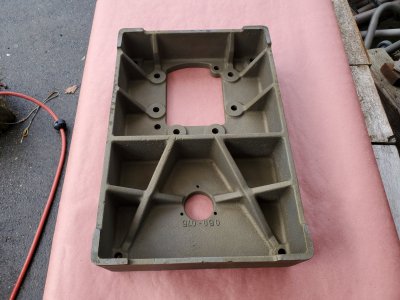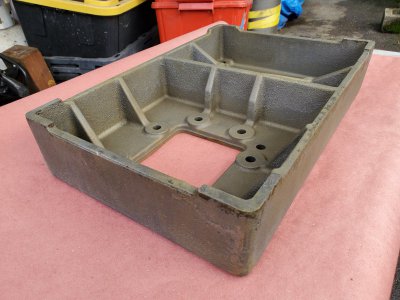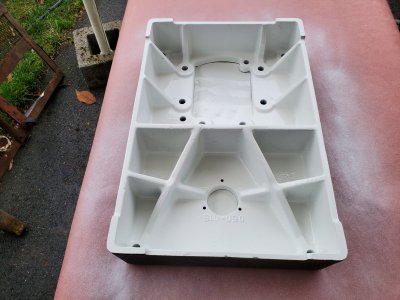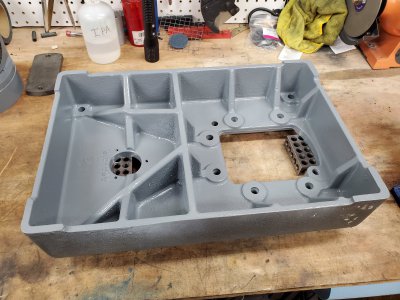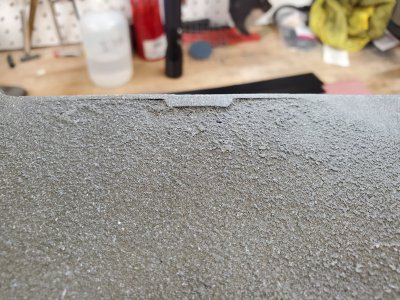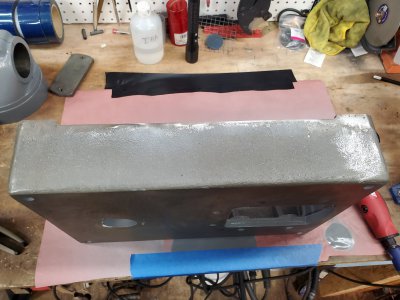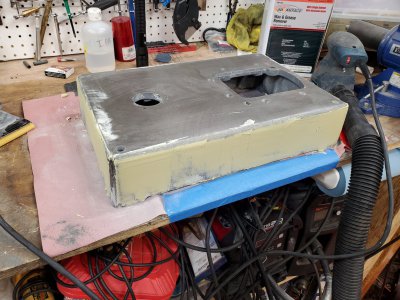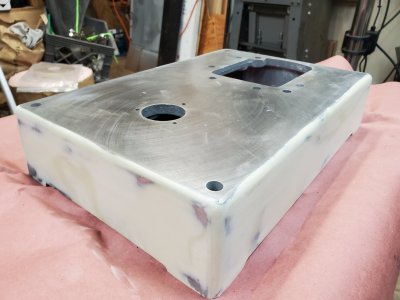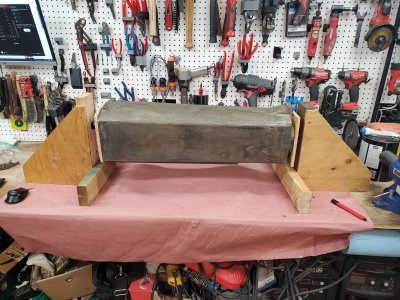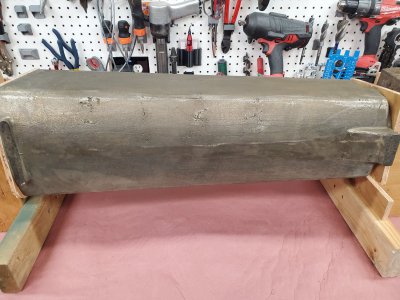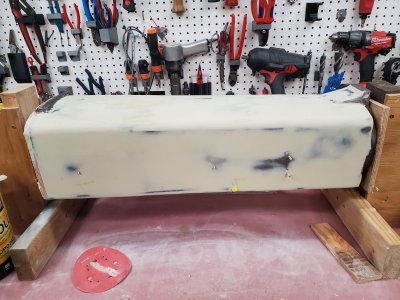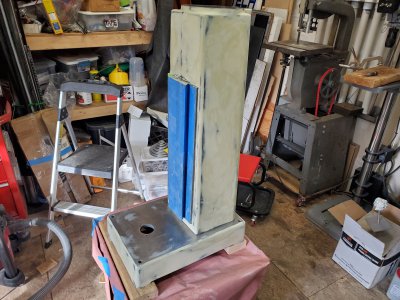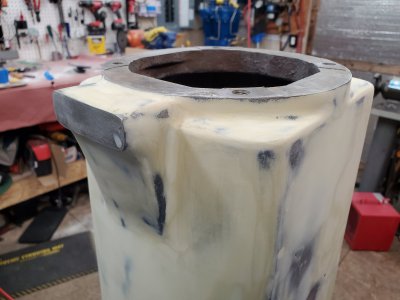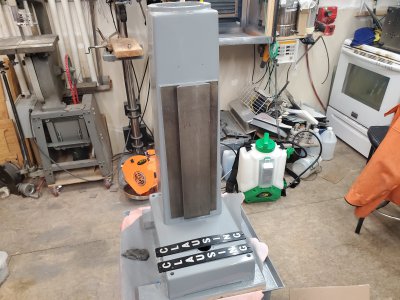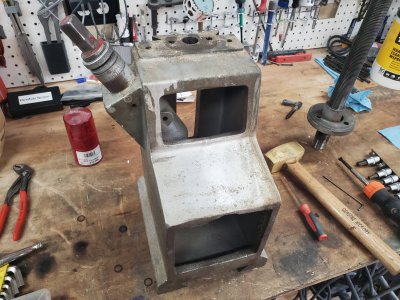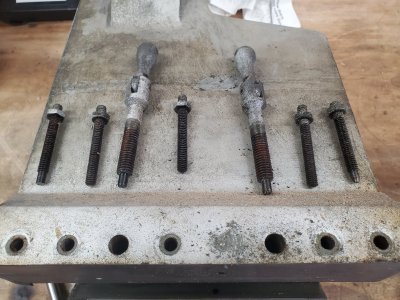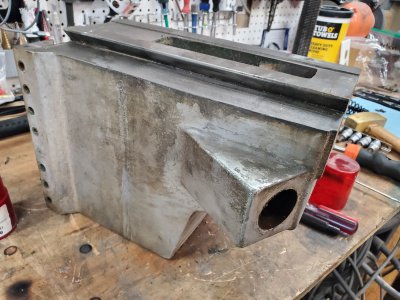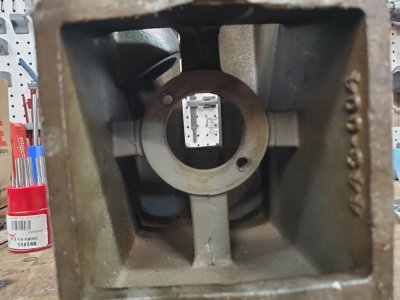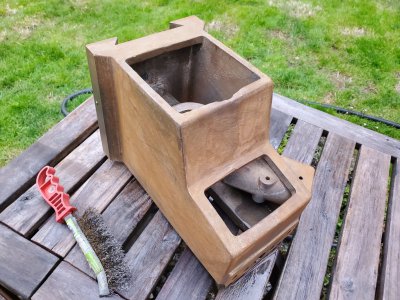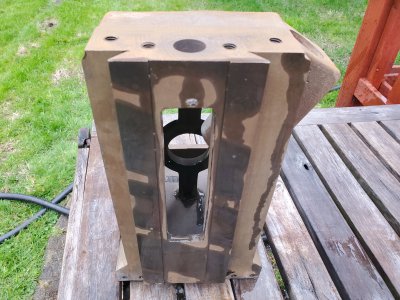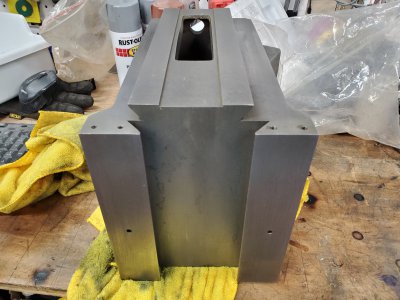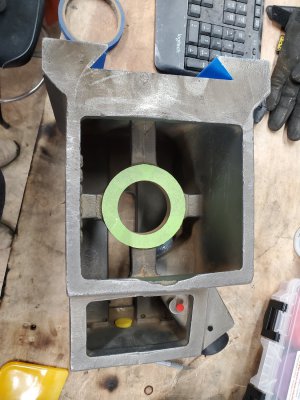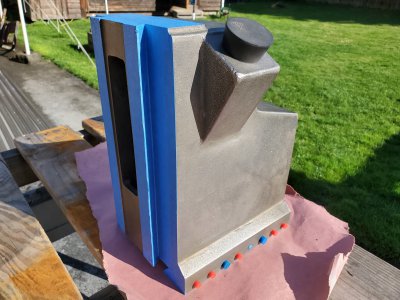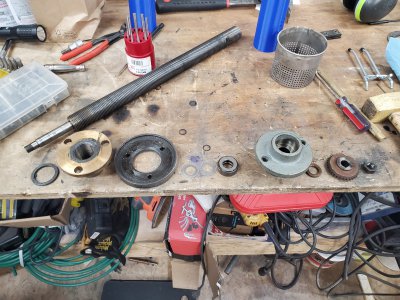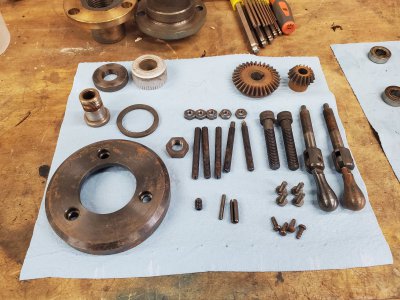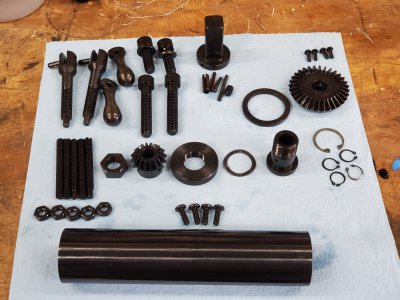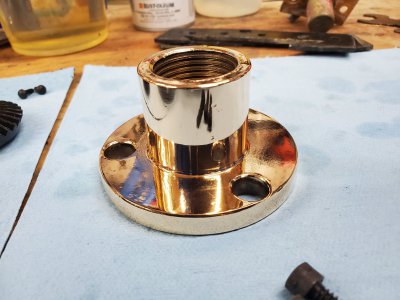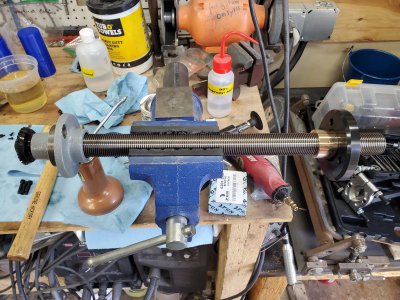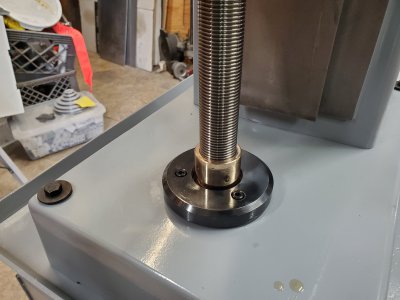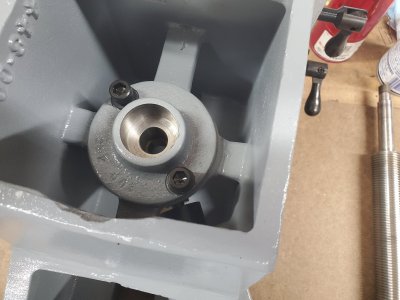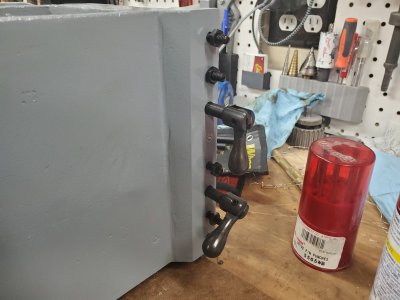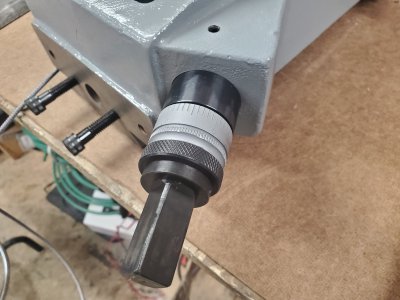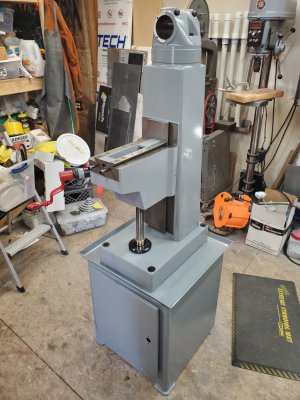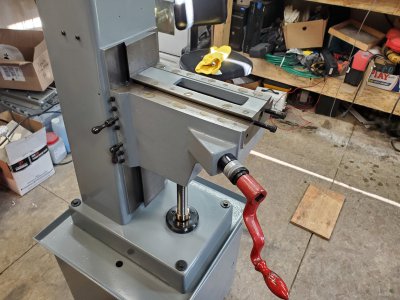- Joined
- Oct 6, 2018
- Messages
- 45
Here's the old degreasing tank I mentioned, I actually did use it on the base and the turret.
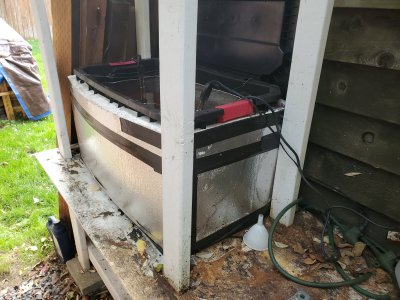
I should also mention I ran Zep purple degreaser diluted with water in this tank. The new tank I tried using just sodium hydroxide (lye, caustic soda, whatever you want to call it) but it wasn't stripping the paint like I wanted with a dilution of 10lbs/~50gal of water even when heated to 180F. I ended up spiking it with about 2.5gal of the Zep, now it's eating paint and grease like nobody's business.
This is the first run on the new tank, you can see the red paint that lined the barrel is coming off in sheets. The tank was overfilled due to the last minute addition of zep, so I had to ease the column in there as the water evaporated.
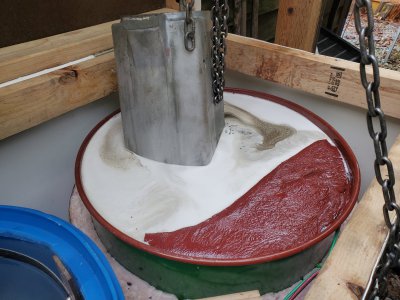

I should also mention I ran Zep purple degreaser diluted with water in this tank. The new tank I tried using just sodium hydroxide (lye, caustic soda, whatever you want to call it) but it wasn't stripping the paint like I wanted with a dilution of 10lbs/~50gal of water even when heated to 180F. I ended up spiking it with about 2.5gal of the Zep, now it's eating paint and grease like nobody's business.
This is the first run on the new tank, you can see the red paint that lined the barrel is coming off in sheets. The tank was overfilled due to the last minute addition of zep, so I had to ease the column in there as the water evaporated.


